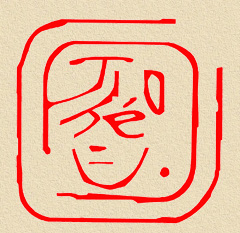Biography
Syukhtun Editions



(pronounced Radich)
born in San Bernardino, California, April 24, 1949
studied at:
San Bernardino High School
Orange Coast College, Costa Mesa
Long Beach State College, Long Beach
Cabrillo College, Santa Cruz
l’École Nationale d’Arts Décoratifs, Nice, France
In-depth genealogy
Reviews
Photos

Along with painting and printmaking, Theo Radic writes and publishes books and sheet music for the guitar, composes for the guitar and guitar ensembles, and teaches tai chi. Since 1974 he has lived in Sweden, except for the years 1987-1990, when he lived with his Swedish wife in Santa Barbara, California.
ONE-MAN SHOWS
 1975 Galleri Grafikhuset, Stockholm, Sweden
1975 Galleri Grafikhuset, Stockholm, Sweden
1976 Galerie Robert Hervieu, Malmö
1977 Galleri Öster, Landskrona
Galleri Carneol, Gothenburg
1978 Galleri Futura, Stockholm
1979 Galleri Futura, Stockholm
1981 Galleri Futura, Stockholm (Visual Fugues)
1982 Galerie Seiler, Stuttgart, Germany
Galleri Olga, Stockholm
Galleri Together, Stockholm
1983 Galleri Sassi, Stockholm
1985 Galerie MB, Stockholm
Galerie La Sensitive, Paris
1986 Galleri 17, Stockholm
1987 San Bernardino Cultural Center, California
(twenty-year retrospective)
1988 Galerie MB, Stockholm (Ocean Diary)
1990 Galleri Överkikaren, Stockholm
1993 Galleri Överkikaren, Stockholm (Collage)
1994 Guernica Gallery, Santa Barbara, California
(Yucca in Bloom)
Feldheym Gallery, San Bernardino, California
1996 Galleri Baggen, Stockholm (Homage to Byron)
1999 Väsby Art Hall, Stockholm (thirty-year retrospective)
2000 Galleri Baggen, Stockholm
2010 Galleri Svea, Stockholm
2012 Galleri Svea, Stockholm
2017 Galleri Norrsken, Stockholm
GROUP SHOWS
1975 Károlyi Foundation for Artists Vence, France
1976 Galerie Remarque, Trans-en-Provence, France
1978 Galerie Remarque, Trans-en-Provence, France
1979 Spring Salon, Liljevalchs Art Hall, Stockholm
1982 Amerika Haus, Munich Germany
1989 Santa Barbara Arts Festival, Santa Barbara, California
2005 Lessedra Mini Print Annual, Sofia, Bulgaria

DOWNLOAD HIGH DEFINITION POSTERS:
Gallery Svea 2010
Gallery Svea 2012
Galleri Norrsken 2017



Everyone experiences drawing and painting as children. I was perhaps one year old therefore when I was first initiated into the painter’s craft. I continued these universal beginnings throughout my school years and sporadic courses in college (which gave me few insights into this art). [...] I had only myself as a teacher in the art of painting.
My evolution as a painter paralleled that of art history in general, beginning with my prehistoric period as a one-year-old-clutcher-of-crayolas, groping through Egyptian and Greek periods; a Renaissance period; and then neo-classicism, romanticism and naturalism; impressionism and fauvism; cubism and abstract expressionism.
At nineteen I went to Europe, thirsty for scope and depth in Art which America lacks. Having established myself in the south of France, I absorbed the emanations of the modern masters who had lived and painted there. I was profoundly moved by the bizarre snow storm over La Côte d’Azur on the night of Picasso’s death. No such storm had ever been seen before in April, as old-timers in Nice told me. [...]

”Moonrise”
(click on image for enlargemnt)
Fully acknowledging my debt to abstract expressionism, I nonetheless do not consider my art ”abstract” – a word that has been grossly misunderstood when applied to painting. For example, the telescopic blue distance behind the head of the Mona Lisa indeed is abstract, considering that the third dimension of depth is non-existent in the painting. It is illusion, trompe l’oeil. ”Abstract” painting is, on the other hand, not really abstract in the sense of the Mona Lisa, because it does not create an abstract third dimension, but remains a surface holding color and form on it.
Nor can ”non-figurative” be used to denote my painting, another umbrella term used to denote many unrelated styles that have emerged since World War I. All painting depicts figures in one way or another, whether the nudes of Renoir, the squiggles of Kandinsky or the rectangular clouds of Rothko. Painting cannot avoid being
”figurative”.
Painting is a non-verbal art form, and most often the names given to the styles (impressionism, cubism, fauvism, etc.) are derogatory in nature, coined by those who were ignorant of the artist’s aims. The best way to determine a painter’s style is not to name it, but to look at it. Beyond looking lurks that most difficult request made by the painter of the viewer: seeing. (excerpt from Crazy Devil Sweeping)

A PAINTER'S STROLL THROUGH
MILLENNA OF WESTERN ART

Trans-USA run 2010 by
my brother John Radich


self-portrait drawn with eyes closed

Mostar
birthplace of the artist's Serbian grandmother Tamara Bukvic
(click on image for enlargement and history)



Home
| Books
| Sheet music for guitar
| Visual arts
| Biography | Syukhtun
Copyright © 2024 Syukhtun EditionsTM, All Rights Reserved
syukhtun.net domain name is trade marked SM , All Rights Reserved
| 




 1975 Galleri Grafikhuset, Stockholm, Sweden
1975 Galleri Grafikhuset, Stockholm, Sweden



